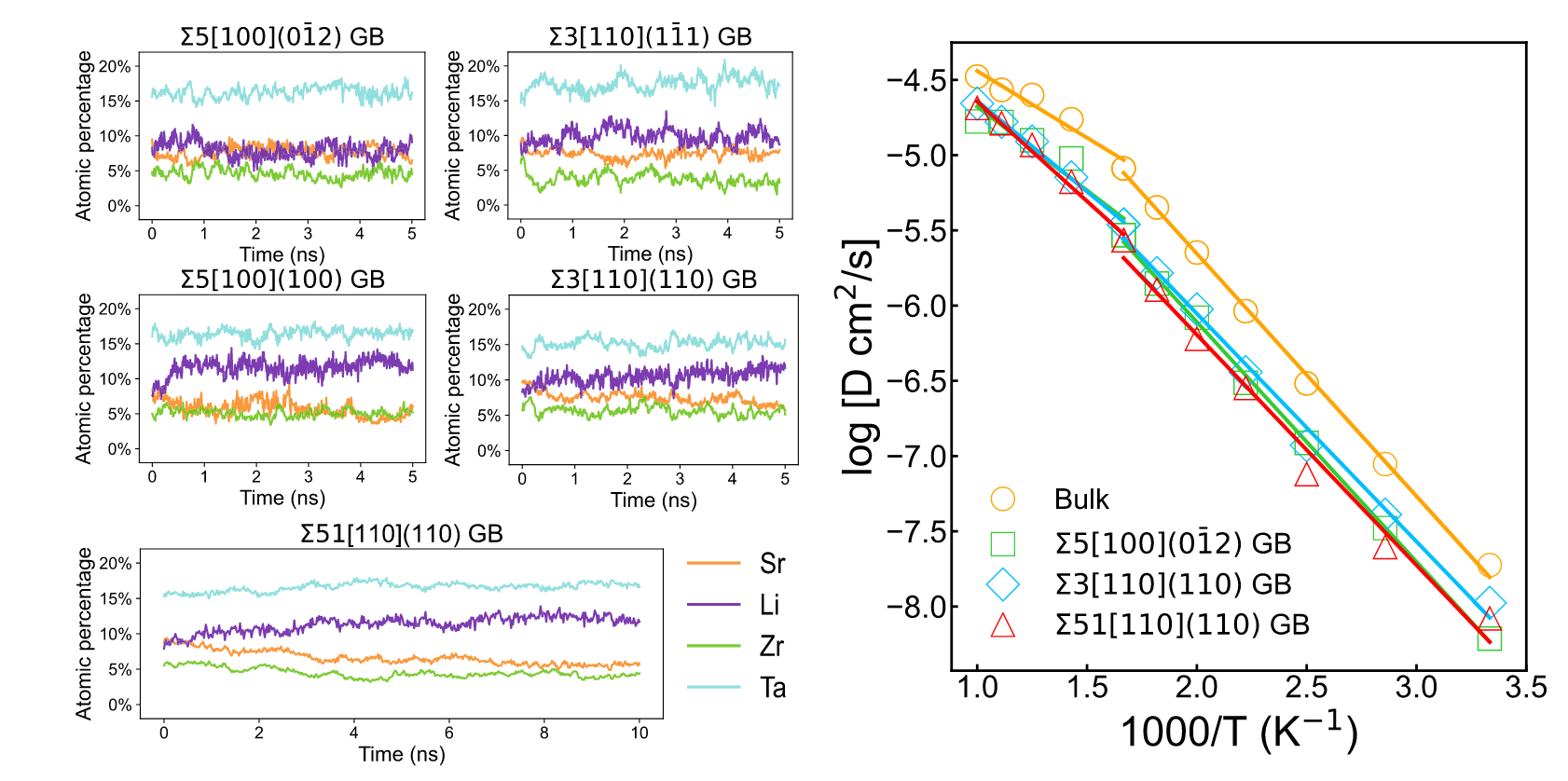GB resistance in oxide solid electrolytes
Ji Qi’s co-first author paper on “Atomic-scale origin of the low grain-boundary resistance in perovskite solid electrolyte Li0.375Sr0.4375Ta0.75Zr0.25O3 (LSTZ0.75)” has been published in Nature Communications! This is a highly-collaborative work under the Center for Complex and Active Materials (CCAM), an NSF MRSEC. Perovskite solid electrolytes for all-solid-state lithium-ion batteries are often plagued by grain boundary (GB) resistance. In this work, the CCAM team use aberration-corrected scanning transmission electron microscopy and spectroscopy, along with an active learning moment tensor potential, to reveal the atomic scale structure and composition of LSTZ0.75 grain boundaries. A key finding is that Li depletion in the GB is mitigated in LSTZ0.75 compared to the typical LLTO peroskite SE. Instead, a nanoscale defective cubic perovskite interfacial structure that contained abundant vacancies is formed. Ji’s contribution is the development of an accurate machine learning interatomic potential to study the highly complex LLTO and LSTZ perovskites, including the GB structures. Using MC and MC simulations, we demonstrate that Li enrichment and Sr vacancies in the GBs of LSTZ play a key role in fast diffusion in LSTZ. Check out this work here.

